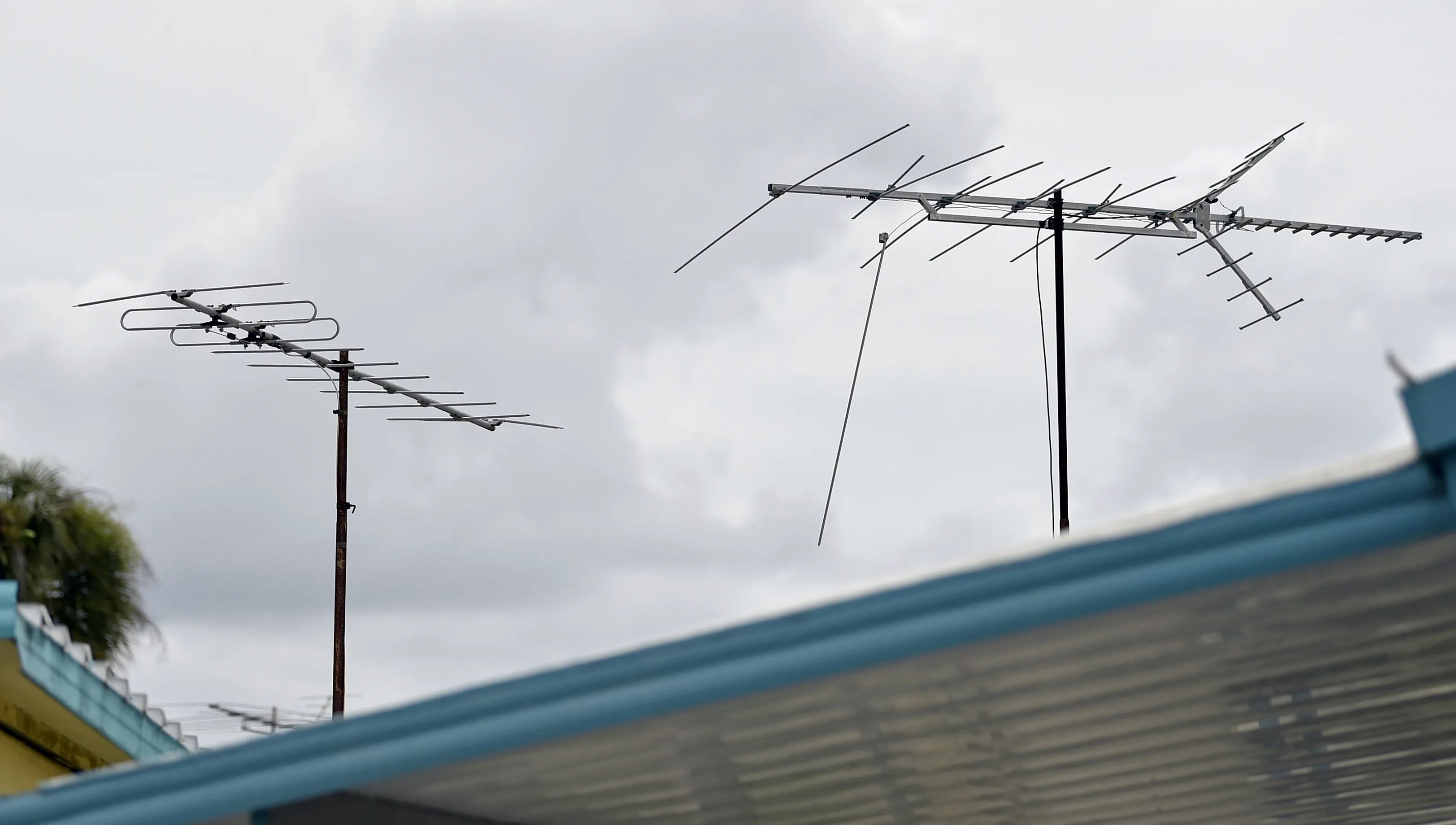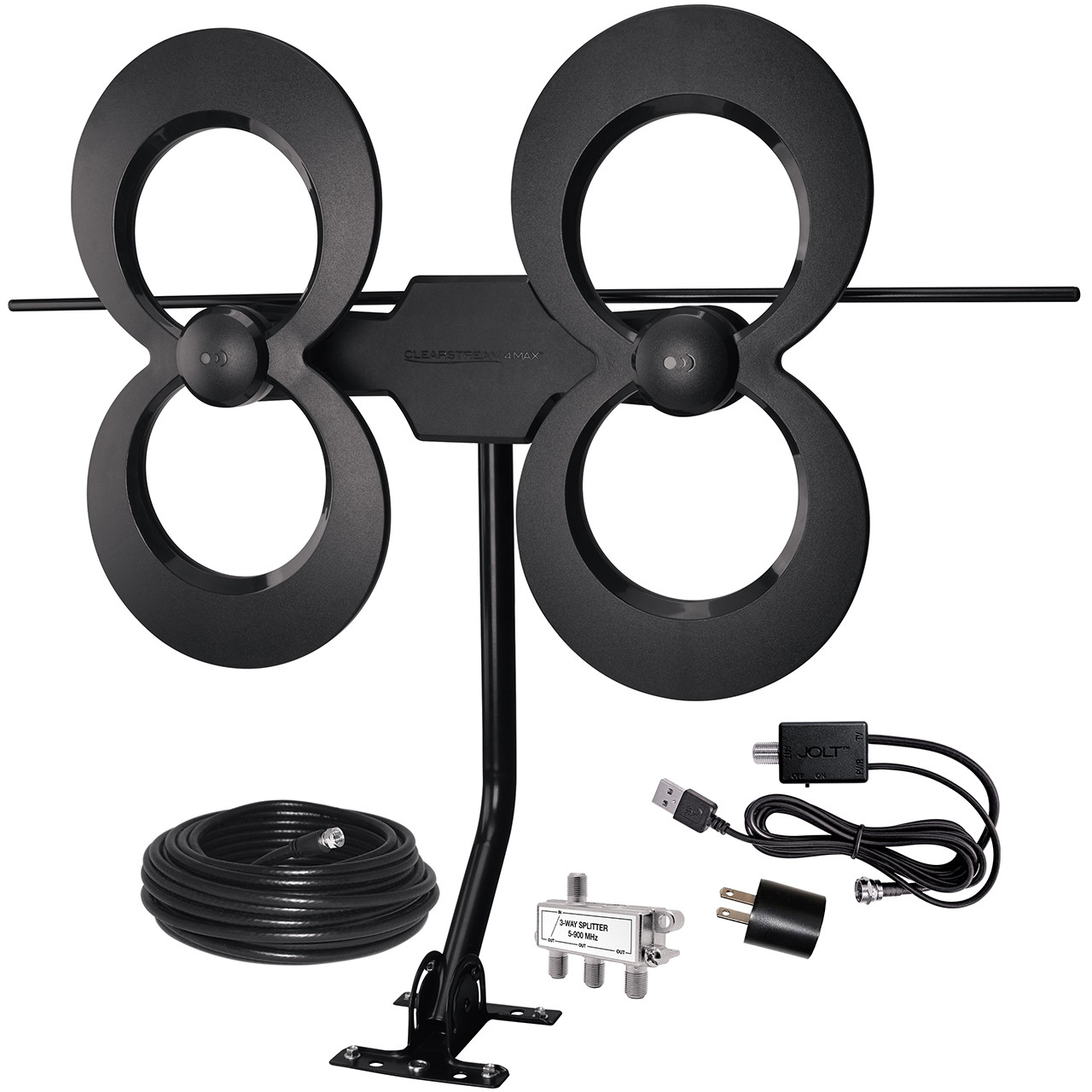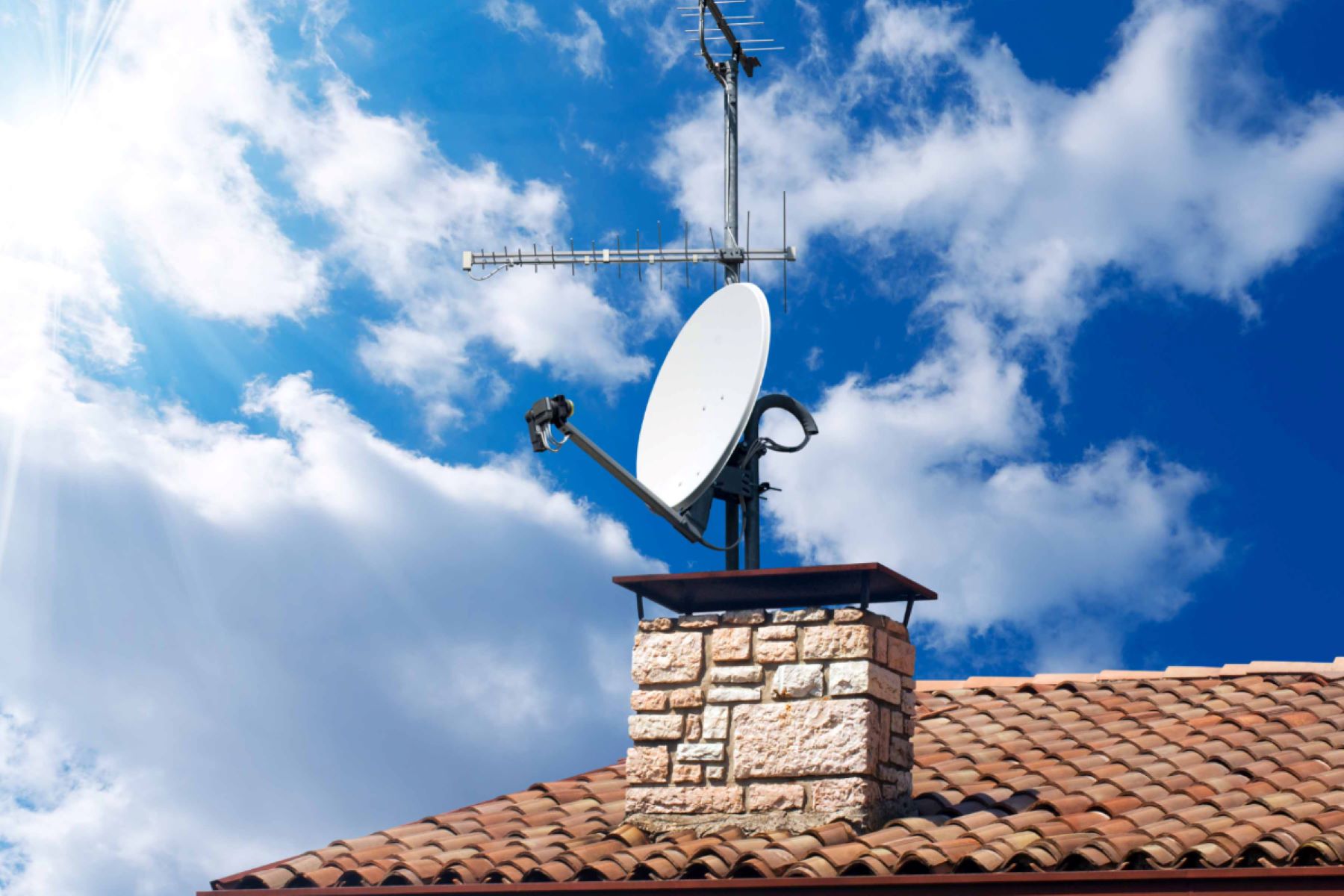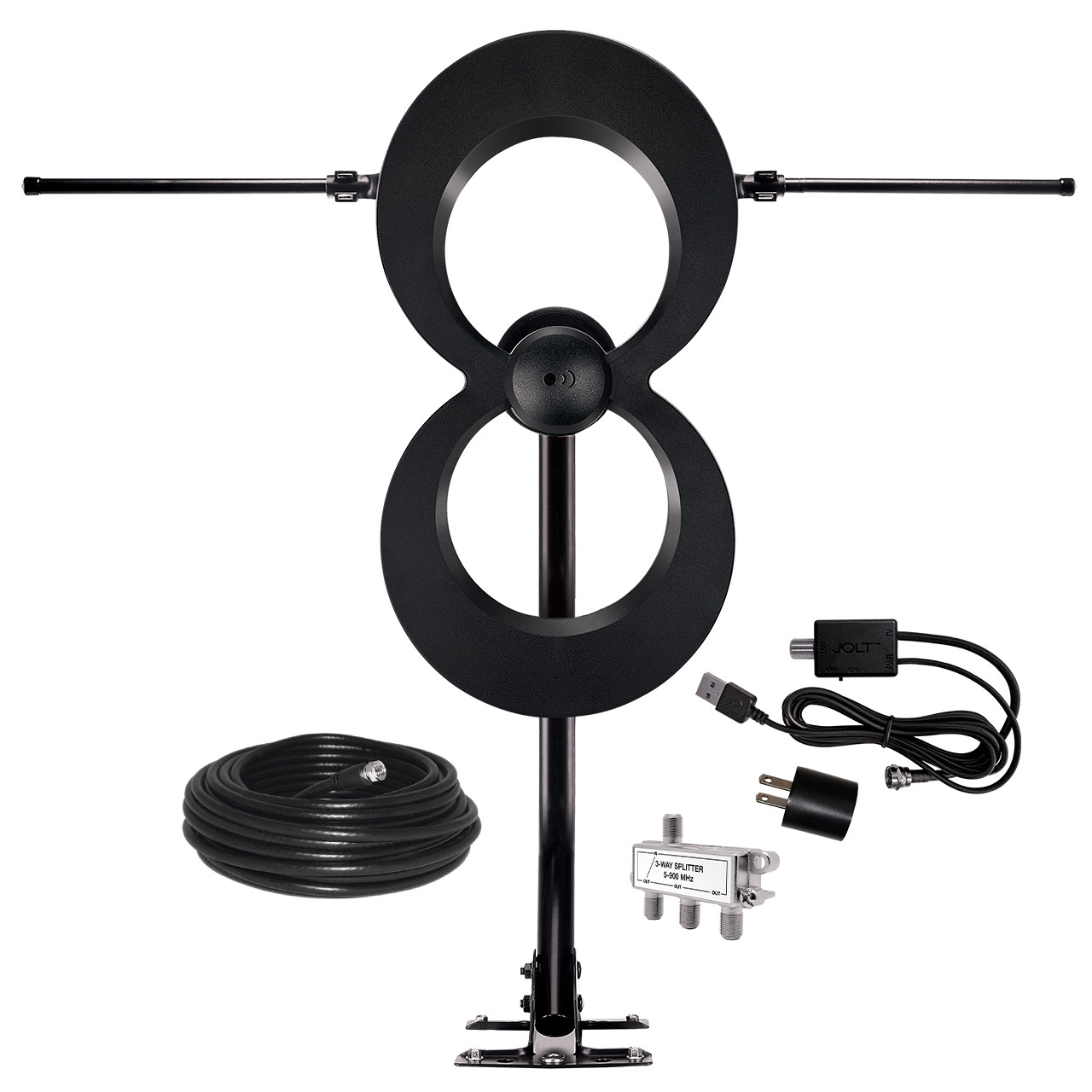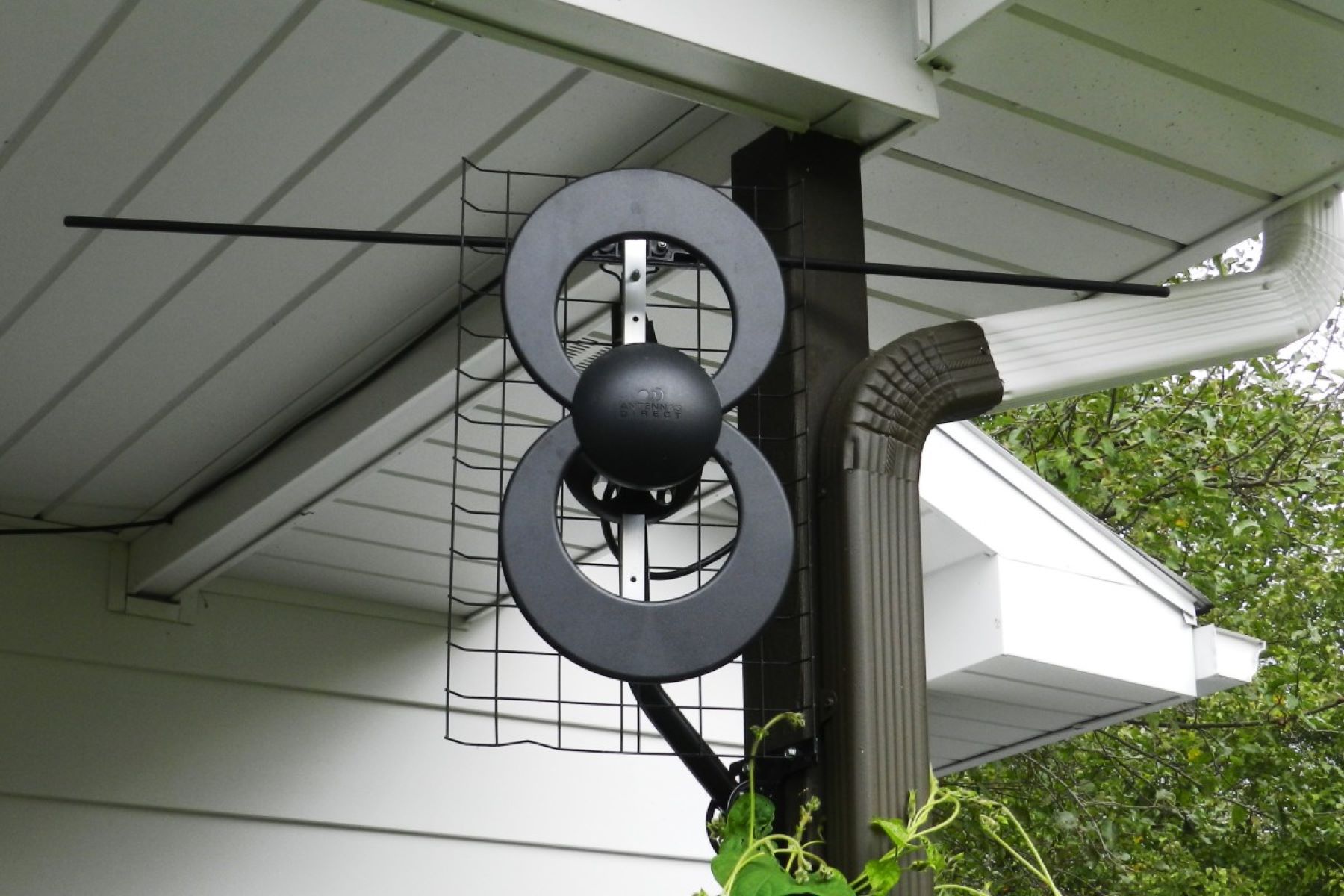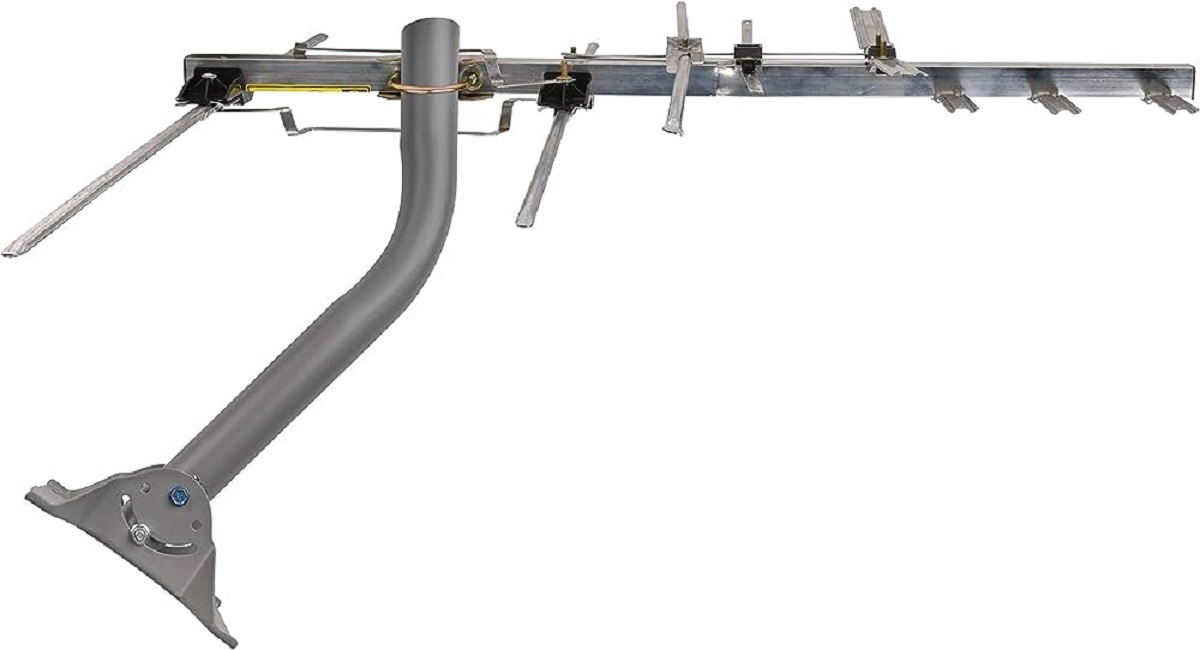Introduction
Welcome to our guide on finding the best TV antenna for rural areas. Living in a rural location comes with its own unique set of challenges when it comes to accessing television channels. Unlike urban areas where cable and satellite connections are readily available, rural areas often face limited or unreliable access to these services.
But fret not! With the right TV antenna, you can enjoy high-quality digital television broadcasts without the need for a cable or satellite connection. Whether you want to catch the latest news, keep up with your favorite shows, or simply enjoy a movie night at home, a TV antenna can provide you with crystal clear reception, even in the most remote of locations.
Before diving into the world of TV antennas, it’s important to consider a few factors that will help you make the best choice for your specific needs. Factors such as distance to broadcast towers, terrain, weather conditions, and available channels should all be taken into account when selecting the right antenna for your rural area.
In this guide, we’ll explore the different types of TV antennas available for rural areas and provide you with a list of the best options in the market. Whether you prefer an outdoor or indoor antenna, we’ve got you covered. So, let’s get started and find the perfect TV antenna to enhance your television viewing experience in rural areas!
Factors to Consider Before Buying
Before purchasing a TV antenna for your rural area, there are several important factors to keep in mind. Taking these factors into consideration will help you choose an antenna that is best suited to your specific location and needs. Let’s take a closer look at these factors:
- Distance to Broadcast Towers: The distance between your rural location and the nearest broadcast towers plays a crucial role in determining the type and range of antenna you need. If you are far away from the towers, you will likely require a larger antenna with a longer range to capture distant signals.
- Terrain and Obstructions: The landscape and physical obstructions between your rural location and the broadcast towers can impact the signal strength. If you are surrounded by hills, trees, or other structures, you may require a more powerful antenna or one with a directional focus to overcome these obstacles.
- Weather Conditions: Extreme weather conditions, such as heavy rain or wind, can affect the quality of TV reception. Consider choosing an antenna that is designed to withstand your specific weather conditions to ensure uninterrupted viewing, even during inclement weather.
- Available Channels: Research the availability of local channels in your area. Determine if they broadcast their signals in UHF or VHF frequencies, as this will impact the type of antenna you need. Some antennas are designed to receive signals in both frequency ranges, while others are specialized for either UHF or VHF.
- Antenna Placement: Decide whether you prefer an outdoor or indoor antenna. Outdoor antennas generally provide better reception, especially if there are obstructions or a significant distance to the towers. Indoor antennas are more convenient and discreet, but may require experimentation with placement for optimal signal reception.
Considering these factors will help you narrow down your options and select the most suitable TV antenna for your rural area. Next, we’ll delve into the different types of TV antennas available and discuss their advantages and disadvantages. So, let’s explore the world of TV antennas and find the perfect solution for your rural television needs!
Types of TV Antennas for Rural Areas
When it comes to TV antennas for rural areas, there are two main types to consider: outdoor antennas and indoor antennas. Each type has its own advantages and disadvantages, so let’s take a closer look at both:
Outdoor TV Antennas
Outdoor TV antennas, as the name suggests, are installed outside of your home. These antennas are designed to withstand different weather conditions and provide optimal reception in rural areas. They are typically larger in size and have a longer range compared to indoor antennas.
One of the key advantages of outdoor antennas is their ability to capture signals from a greater distance. This makes them ideal for rural areas where the broadcast towers may be further away. Outdoor antennas can also be mounted on rooftops or poles, allowing for better line-of-sight to the towers and reducing potential signal obstructions.
However, outdoor antennas may require professional installation due to their larger size and the need to properly position and aim them towards the broadcast towers. Additionally, they are more visible and may not be suitable for those who prefer a more discreet setup.
Indoor TV Antennas
Indoor TV antennas are designed to be placed inside your home, making them a convenient option for rural areas. These antennas are smaller and more compact, allowing for easier installation and placement. They are ideal for individuals who want a simple and hassle-free setup.
Indoor antennas are suitable for rural areas with good signal reception and if the broadcast towers are within a reasonable distance. They are typically less expensive compared to outdoor antennas and can be easily moved around to find the best signal reception.
However, indoor antennas may be more susceptible to signal interference from walls, furniture, and other household objects. They may also have a shorter range compared to outdoor antennas and may not provide the same level of signal strength in more remote rural areas.
Ultimately, the choice between an outdoor or indoor TV antenna depends on your specific needs and the reception conditions in your rural area. Consider factors such as distance to broadcast towers, terrain, and weather conditions when deciding which type of antenna is right for you.
In the next section, we will explore some of the best TV antennas available for rural areas. So, let’s dive into the options and find the perfect antenna to enhance your television viewing experience!
Outdoor TV Antennas
Outdoor TV antennas are an excellent choice for rural areas due to their ability to capture signals from a greater distance. These antennas are designed to be installed outside of your home, whether on the roof, in the attic, or on a pole, to provide optimal reception for your television.
One of the main advantages of outdoor antennas is their larger size and longer range. They are built to capture signals over longer distances, which is beneficial in rural areas where the broadcast towers may be located far away. The higher position and unobstructed line-of-sight to the towers also contribute to improved signal reception.
Outdoor antennas come in various designs, including yagi, log-periodic, and directional antennas. Yagi antennas are the most common type, consisting of multiple elements in a row to amplify signals in a specific direction. Log-periodic antennas offer broader frequency coverage, making them suitable for areas with both UHF and VHF channels. Directional antennas focus their reception in a specific direction, allowing for better signal strength in areas with towers located in a particular direction.
Installing an outdoor antenna may require professional help, especially if you are not comfortable climbing on your roof or handling the necessary equipment. Proper placement and direction alignment are crucial for optimal reception. However, once properly installed, outdoor antennas can provide reliable and high-quality reception, even in remote rural areas.
It’s important to note that outdoor antennas are more visible compared to indoor antennas and may not be suitable for those who prefer a more discreet setup. Additionally, they are more exposed to weather conditions and will need to withstand elements such as rain, wind, and snow. Ensure that the antenna you choose is built to withstand the specific weather conditions of your area.
When selecting an outdoor TV antenna for your rural area, consider factors such as distance to broadcast towers, terrain, and available channels. It’s also worth researching customer reviews and recommendations to find a reputable brand that offers reliable performance.
Now that we’ve explored outdoor TV antennas, it’s time to move on to the next section, where we’ll discuss indoor TV antennas and their advantages for rural areas. So, let’s continue our journey to find the best TV antenna for your rural location!
Indoor TV Antennas
Indoor TV antennas are a convenient and easy-to-install option for rural areas. These antennas are designed to be placed inside your home, allowing you to enjoy high-quality television reception without the need for complicated setups or outdoor installations.
One of the main advantages of indoor antennas is their compact size and ease of installation. They are generally smaller than outdoor antennas and can be placed on or near your TV, eliminating the need for complicated mounting procedures. This makes them ideal for individuals who prefer a hassle-free and discreet setup.
Indoor antennas are suitable for rural areas where the broadcast towers are within a reasonable distance and signal reception is favorable. If you live in a rural location with good signal strength, an indoor antenna can provide you with clear and reliable reception for your favorite television channels.
Another advantage of indoor antennas is their affordability. They are typically more budget-friendly compared to outdoor antennas, making them a cost-effective option for individuals in rural areas who want to access over-the-air TV channels without breaking the bank.
However, it’s important to note that indoor antennas may be more susceptible to signal interference, especially if there are obstacles such as walls or furniture between the antenna and the broadcast towers. It’s recommended to experiment with antenna placement to find the optimal position that yields the best reception.
There is a wide variety of indoor antennas available in the market, ranging from basic rabbit-ear antennas to more advanced flat-panel designs. Some indoor antennas also come with built-in amplifiers to boost the signal strength and improve reception in areas with weaker signals.
When selecting an indoor TV antenna for your rural area, consider factors such as the distance to broadcast towers, available channels, and any potential signal obstructions within your home. Reading customer reviews and recommendations can also be helpful in identifying models that have proven to be reliable and effective for rural locations.
Now that we’ve explored indoor TV antennas, let’s move on to the final section, where we’ll highlight some of the best TV antennas available for rural areas. So, let’s continue our quest to find the perfect antenna that will elevate your rural television experience!
Best TV Antennas for Rural Areas
When it comes to finding the best TV antenna for rural areas, there are several options that have proven to deliver excellent reception and performance. These antennas have received positive reviews from customers and are known for their ability to capture signals even in remote locations. Let’s take a look at some top choices:
- 1. ClearStream 2MAX Outdoor HDTV Antenna: This outdoor antenna offers a range of up to 60 miles and comes with a revolutionary design that helps capture signals from various directions. It is easy to install and provides reliable reception, making it an excellent choice for rural areas.
- 2. Mohu Leaf Metro Indoor HDTV Antenna: The Mohu Leaf Metro is a compact indoor antenna that delivers impressive performance. It can receive signals from up to 25 miles away and is ideal for rural areas with close proximity to broadcast towers. Its simple design and easy installation make it a popular choice.
- 3. Winegard Platinum Series HD7694P Outdoor Antenna: With a range of up to 45 miles, this outdoor antenna is known for its reliability and signal capturing capabilities. It is designed to withstand harsh weather conditions and provides excellent reception in rural areas.
- 4. Channel Master EXTREMEtenna Outdoor Antenna: This outdoor antenna features a rugged design and can capture signals from distances of up to 80 miles. It is highly recommended for rural areas where broadcast towers are far away, and it provides reliable reception even in challenging conditions.
- 5. 1byone Indoor/Outdoor HDTV Antenna: This versatile antenna can be used both indoors and outdoors, making it a suitable choice for rural areas. It has a range of up to 80 miles and is designed to deliver reliable performance in any weather condition.
It’s important to note that the performance of any TV antenna can be influenced by various factors, such as location, terrain, and weather conditions. What works well for one person in a specific rural area may not work as effectively for another. Therefore, it’s recommended to consider your specific needs and the factors mentioned earlier before making a final decision.
Before purchasing any antenna, it’s also a good idea to check the availability of TV channels in your area and ensure that the antenna you choose is compatible with the broadcast frequencies used by those channels.
Remember that the performance of your TV antenna may also depend on proper installation and positioning. It’s recommended to carefully follow the manufacturer’s instructions or consult a professional to ensure optimal reception.
Now that we’ve explored some of the best TV antennas for rural areas, it’s time to wrap up our guide. With the right antenna, you can enjoy high-quality television reception and access a wide range of channels, even in the most remote locations!
Conclusion
Choosing the best TV antenna for rural areas can significantly enhance your television viewing experience. Whether you opt for an outdoor antenna or an indoor antenna, there are options available to suit your specific needs and location.
Before making a decision, it is crucial to consider factors such as the distance to broadcast towers, terrain, weather conditions, available channels, and antenna placement. Understanding these aspects will help you select the antenna that will provide optimal reception in your rural area.
For those living in areas with great signal strength and proximity to broadcast towers, indoor antennas like the Mohu Leaf Metro or the 1byone Indoor/Outdoor HDTV Antenna may be the perfect choice. These compact and easy-to-install antennas can provide reliable reception without the need for complex installations.
If you reside in a more remote rural location, outdoor antennas like the ClearStream 2MAX or the Winegard Platinum Series HD7694P become more suitable. These larger antennas offer longer range and better signal capturing capabilities, making them ideal for areas with distant broadcast towers and challenging weather conditions.
Remember, the performance of any TV antenna can vary based on multiple factors, so it’s essential to do thorough research and consider the specific conditions of your area before making a purchase.
By selecting the right TV antenna for your rural area, you can enjoy crystal clear reception and access a wide range of channels without relying on cable or satellite connections. Whether you prefer local news, sports, or entertainment, a high-quality TV antenna will ensure that you never miss out on your favorite shows and programs.
Now that you have an understanding of the factors to consider and the types of TV antennas available, it’s time to explore your options. Find the perfect TV antenna that suits your rural area, install it correctly, sit back, and enjoy a world of entertainment right from your home.







